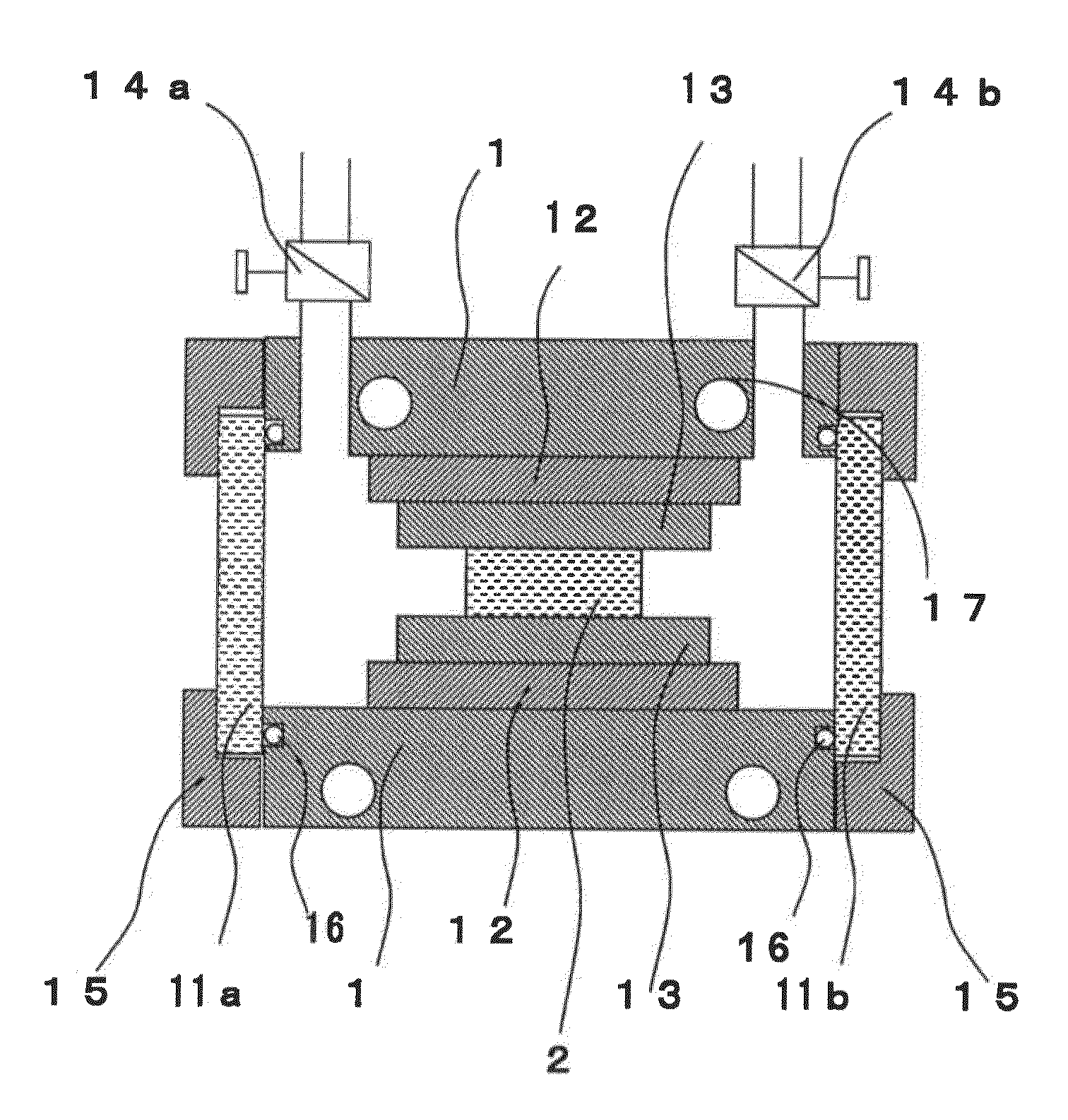Optical wavelength conversion element having a cesium-lithium-borate crystal
a technology of optical wavelength conversion and cesium lithium bore, applied in the field of optical wavelength conversion elements, can solve the problems of deterioration in quality or laser damage, low power obtained when a high-output ultraviolet laser is generated, and change in internal refractive index, etc., to achieve high reliability in long-term operation, excellent operability, and high performance.
- Summary
- Abstract
- Description
- Claims
- Application Information
AI Technical Summary
Benefits of technology
Problems solved by technology
Method used
Image
Examples
example 1
[0069]Next, an example of an embodiment of the present invention is described together with comparative examples. The present invention, however, is not limited by the following example and comparative examples by any means.
[0070]First, a CLBO crystal was cut in the orientation of (θ, φ)=(61.9°, 45°) and was then optically polished, and thereby a 10-mm long element with a cross-section of 5×5 mm2 was obtained. This element was placed inside the optical cell 1 of the wavelength conversion device shown in FIG. 4 and was heated in the atmosphere at 150° C. for 120 hours. Thereafter, the atmosphere gas was replaced by argon gas, and the element further was heated at 150° C. for 72 hours, with the argon gas being allowed to flow at a flow rate of 25 ml / min. Thus, an optical wavelength conversion element of this example was obtained. With respect to this optical wavelength conversion element, the transmission spectrum was measured with unpolarized infrared light using a Fourier transform ...
PUM
| Property | Measurement | Unit |
|---|---|---|
| transmittance | aaaaa | aaaaa |
| transmittance | aaaaa | aaaaa |
| temperature | aaaaa | aaaaa |
Abstract
Description
Claims
Application Information
 Login to View More
Login to View More - R&D
- Intellectual Property
- Life Sciences
- Materials
- Tech Scout
- Unparalleled Data Quality
- Higher Quality Content
- 60% Fewer Hallucinations
Browse by: Latest US Patents, China's latest patents, Technical Efficacy Thesaurus, Application Domain, Technology Topic, Popular Technical Reports.
© 2025 PatSnap. All rights reserved.Legal|Privacy policy|Modern Slavery Act Transparency Statement|Sitemap|About US| Contact US: help@patsnap.com



